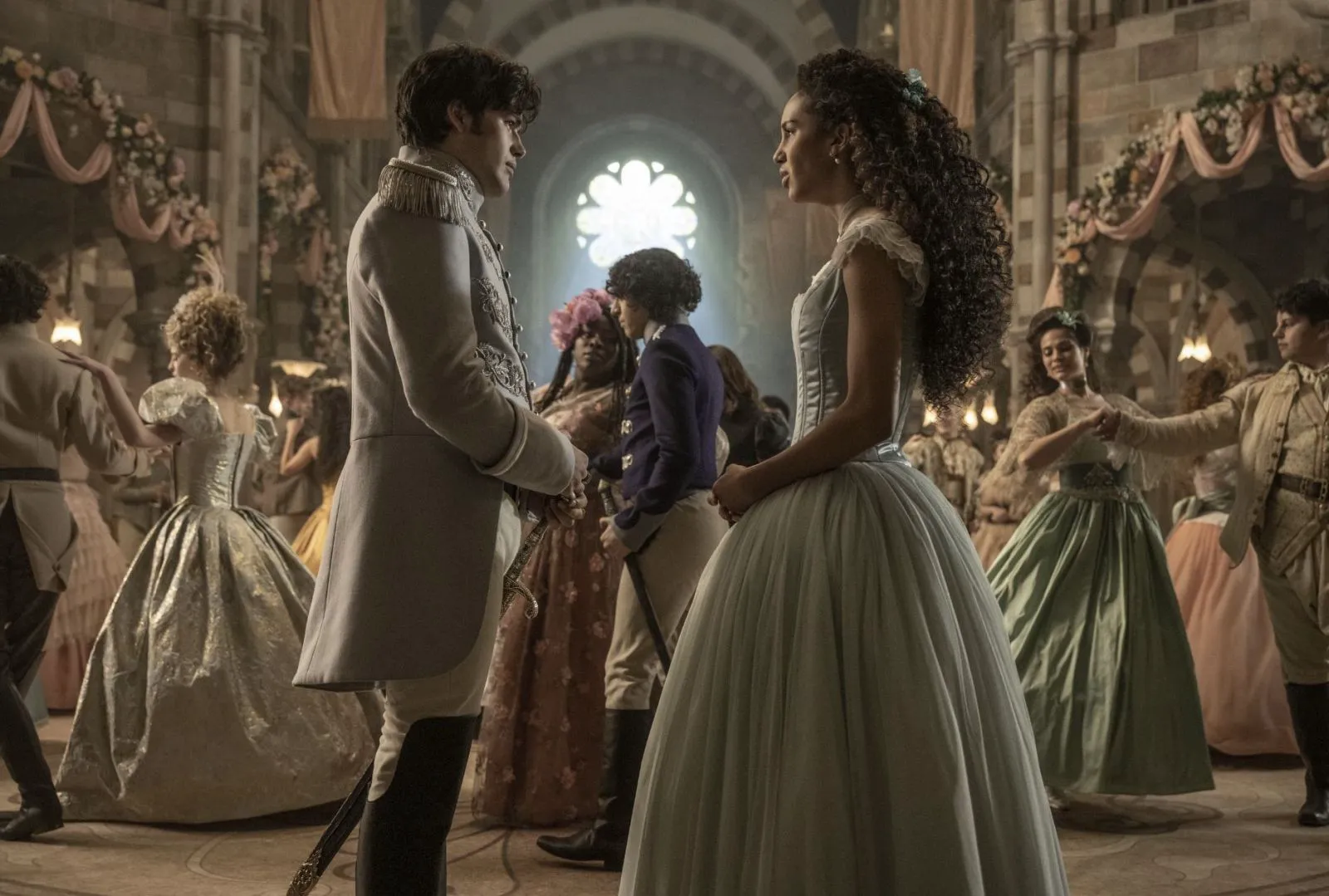Best childhood friends find themselves in a magical school where children become fairytale heroes. The problem is that Sophie, who dreams of becoming a princess, is sent to the school for evil, while the gothic Agatha finds herself surrounded by beauties in ball gowns. The girls believe there has been a mistake in their enrollment, but the headmaster insists that the decision is correct.

Sofia Anna Caruso as Sophie in a still from “The School for Good and Evil”
“The School for Good and Evil” is a book series by Soman Chainani that has not only received worldwide critical acclaim but has also been repeatedly featured on lists of the best fantasy novels. The world of the series is built on breaking traditional genre tropes: instead of the clichéd Disney atmosphere, there is a darkness characteristic of Hans Christian Andersen’s fairy tales. The modernization of classic images allowed the author to show the contrast between the life principles of royal figures living in a sunny palace and dark wizards living in a misty castle.
Netflix’s Gamble on a Fantasy Franchise

Michelle Yeoh as Professor Anemone in a still from “The School for Good and Evil”
For Netflix, the adaptation of this series is not only an opportunity to join the battle for teenage attention but also an attempt to create its own large-scale franchise. The series of six books could have given the creators a huge space to realize their own fantasies, as well as a reliable foundation for a number of sequels, but problems began with the very first announcements. Information about the sale of rights to Universal Pictures to produce films based on the series appeared back in 2013, but the start of filming was announced only in 2020, when the online service fully took over the project. The delay noticeably affected the relevance of the film, because in the early 2010s, studios were snapping up teenage bestsellers, but now the peak of popularity for such films has subsided.
Director’s Choice and Script Issues
The difficulties also lie in the unconventional approach to the choice of director, because Paul Feig (known for the female version of “Ghostbusters”) had not previously worked in the genre of teenage fantasy. The author had to adapt the book world, worthily presenting the original source on the screen: if the creators coped with conveying the atmosphere of magic, which was helped by many star cameos (Cate Blanchett, Charlize Theron, Laurence Fishburne, Michelle Yeoh), then the large length of the film raises a number of questions to the script.

Charlize Theron as Lady Lesso in a still from “The School for Good and Evil”
Initially, it is worth noting that the original series has a lot in common with “Harry Potter”: characteristic elements of “The School for Good and Evil” are the secrecy of the magical world for ordinary people, mysterious teachers and a powerful headmaster, as well as a conditional division into antagonists and protagonists within the educational process. The presence of a more popular series with a similar motif already speaks of the difficulties of launching a franchise, as well as the possible lack of demand for the Netflix project in modern realities.
Missed Opportunities and Familiar Tropes

Sofia Wylie as Agatha in a still from “The School for Good and Evil”
“The School for Good and Evil” also resembles “Shrek,” in which enough time was devoted to contrasting the nature of good and evil, and the main participants in the plot were fairytale characters. However, unlike the cartoon, the film spends too much time revealing the basic concepts of the confrontation between the parties, which is why the creators do not have time to introduce viewers to the characters. Instead of details of Sophie and Agatha’s friendship, as well as demonstrating the workings of magic, the authors pay attention to clashes between mentors and love triangles.
The only gripping storyline is Sophie’s transformation with the subsequent transition to the dark side. Although this move is a genre cliché (“Oz the Great and Powerful”), within the framework of the story about contrasts, it looks quite organic, creating a reliable support for the final duel between students.
“The School for Good and Evil” is unlikely to repel fans of the book, but it is difficult to deny that the potential of the adaptation was not fully realized: the film lacks details that could become a connecting link between the book and the screen world, which is why there is no synergy.